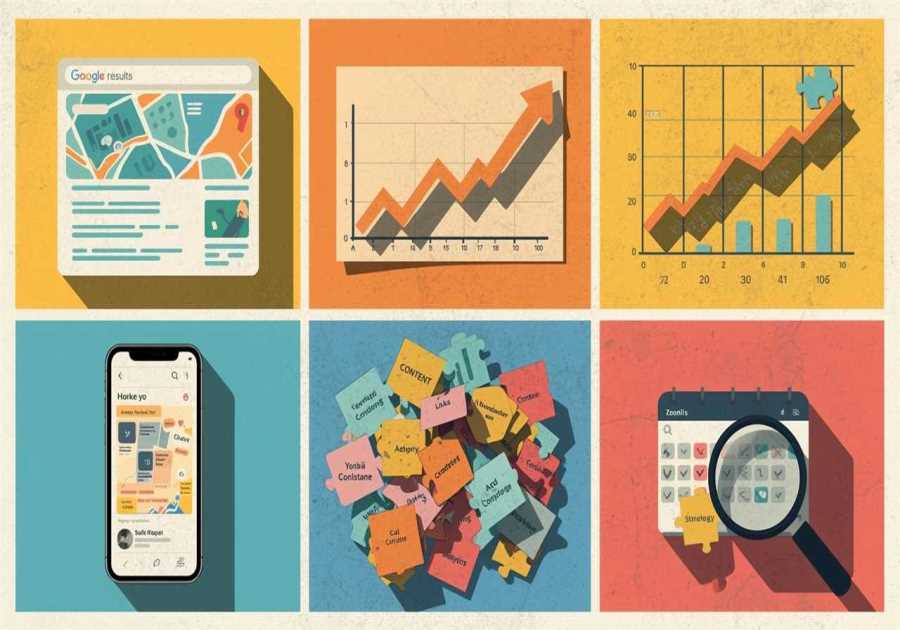
If you run an e-commerce brand—or even just sell a few products online—you’ve probably heard conflicting opinions about email marketing. Some claim it’s outdated, while others think it’s just a quick way to blast the same message to everyone on their list.
Both assumptions are wrong.
If you’ve written email marketing off, you’re leaving a lot of money on the table. In fact, the only reason you might not be seeing big results from your email campaigns isn’t because email marketing is broken—it’s because your strategy is.
Here’s the truth: email marketing delivers an average 35x ROI. That means for every $1 you spend, you could see $35 back. Imagine a stock market return like that—every investor on Wall Street would be scrambling to get in. And yes, brands are seeing this in the real world. At Bad Marketing, for example, we’ve seen e-commerce clients generate over $100,000 per month from email alone.
So why is email still this powerful, and how can you use it to grow your online business? Let’s break it down.
Email Is Direct Access to Your Customer
Social media is noisy. Algorithms change, posts get buried, and your message can easily vanish into the void. Email is different—it’s a direct, one-on-one line between your brand and your customer.
When you send a message that’s relevant to your audience, you’re not just making a sale; you’re building a relationship. And relationships in e-commerce translate into repeat purchases, loyalty, and long-term customer value.
Consider this: emails with personalized subject lines are 26% more likely to be opened. That’s a massive difference made by a simple tweak—addressing customers by name or tailoring the subject line to their interests.
Segmentation: The Game-Changer You Can’t Ignore
The biggest mistake most brands make? Treating their email list like one big crowd instead of a group of individuals. Segmentation fixes that.
Segmentation means dividing your list into smaller, more specific groups based on behavior, demographics, or buying history. For example:
- First-time buyers can get a welcome discount and educational emails about your brand.
- Frequent shoppers can receive early access to new products.
- Cart abandoners can be sent reminders (and maybe a gentle nudge with a coupon).
Done right, segmentation is a revenue multiplier. In fact, brands that segment properly see an average 760% increase in email revenue. Yes, that extra zero is real.
If you take one thing away from this article, it’s this: start segmenting yesterday.
Email Beats Social Media in Visibility
Yes, social media has billions of users. But here’s the key difference: on social media, you’re competing with cat videos, political debates, and the latest viral dance trend. On email, you’re competing with… well, maybe a few promotional offers and a newsletter or two.
And as of 2025, 4.5 billion people use email globally, with 58% checking it before they look at anything else online. That’s prime visibility.
Even better, email usage is steady across all age groups—from Gen Z to retirees—making it one of the few marketing channels that works across demographics.
Follow-Up: The Profit Multiplier
Most brands spend huge amounts on ads to get traffic… and then they stop talking to customers after the first interaction. That’s like inviting someone to a party, greeting them at the door, and then ignoring them for the rest of the night.
Follow-up is where email shines. With automation, you can set up sequences that nurture customers without manual effort:
- Abandoned cart flows: average 45% open rates and over 10% conversion rates.
- Welcome series: around 50% open rates and 3x higher transaction rates.
These sequences don’t just recover lost sales—they deepen customer trust and encourage repeat business. And in a world where ad costs are climbing (thanks, iOS 14), automated email flows are a cost-effective way to make every lead count.
Retention: Turning One-Time Buyers Into Lifelong Customers
Acquiring a customer is expensive. Keeping them? That’s where profit lives.
Email marketing is one of the most powerful tools for retention. In fact, 59% of consumers say their purchasing decisions are influenced by email marketing. That means if you’re not using email to stay in touch with past customers, you’re losing easy, low-cost sales.
Retention strategies might include:
- Exclusive offers for repeat customers.
- Birthday or anniversary discounts.
- Product recommendations based on past purchases.
These small touches keep your brand top-of-mind and make customers feel valued.
The Testing Lab You Already Own
Unlike paid ads where every experiment costs you money, email lets you test ideas for free. You can run A/B tests on subject lines, call-to-action buttons, or even different product descriptions to see what gets the best response.
Even better, email can be a data goldmine. By running surveys or quizzes, you can collect “zero-party data”—information customers willingly share with you. This data can help you:
- Improve targeting in other channels (like Facebook ads).
- Refine your product development.
- Create more effective copy for your website.
Three Boxes Every E-Commerce Email Strategy Must Check
To make sure your email marketing actually drives results, you need to nail these three elements:
-
Personalization & Segmentation
Go beyond first names. Use browsing history, purchase behavior, and preferences to send hyper-relevant content. -
Automated Follow-Up & Retention
Set up flows like abandoned cart emails, welcome sequences, and win-back campaigns to keep your pipeline warm. -
Use Email as a Testing Ground
Experiment, analyze, and apply what works to your broader marketing strategy.
Email Isn’t Dead—It’s Dominating
Email marketing in 2025 is alive, well, and more profitable than ever. It’s how you:
- Build relationships instead of just making transactions.
- Retain customers without breaking the bank.
- Test new ideas without risking your ad budget.
If you ignore email, you’re not just missing out on a marketing tactic—you’re ignoring one of the most reliable, scalable revenue channels available to your e-commerce business.
So start segmenting, set up your automations, and treat every email as an opportunity to connect. Because when you do it right, email isn’t just about sending promotions—it’s about building a customer base that comes back again and again.






